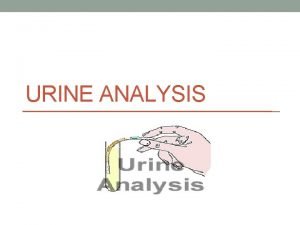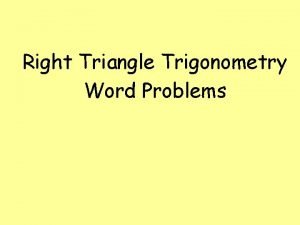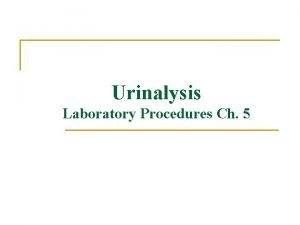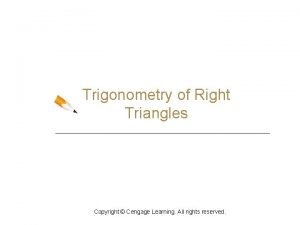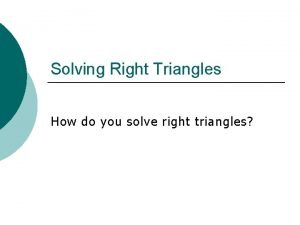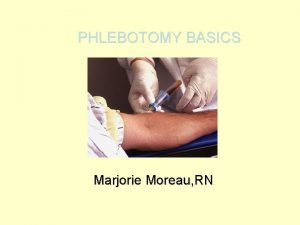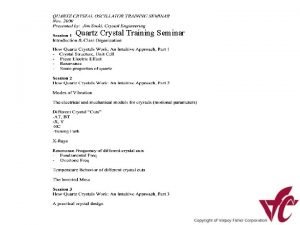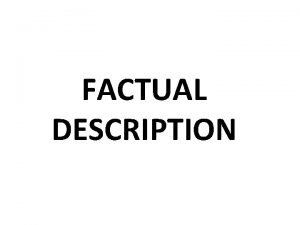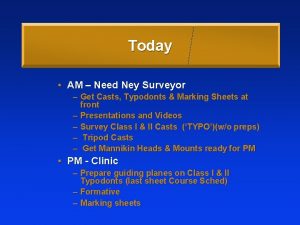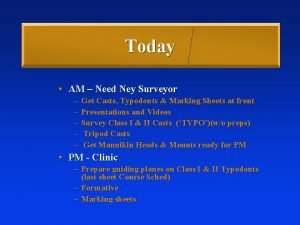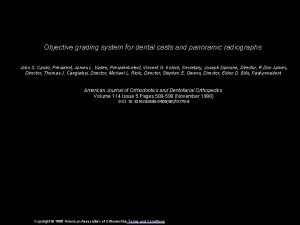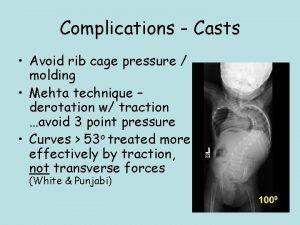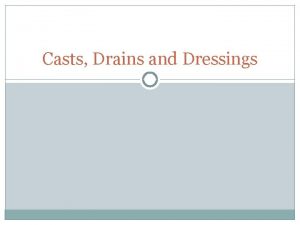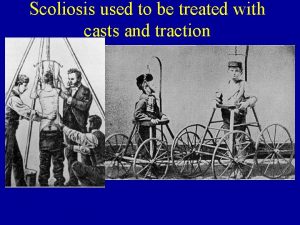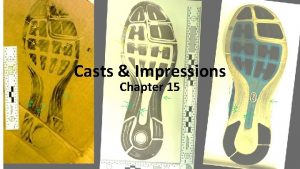Today AM Seminar 3157 Get Casts from Marjorie


























































- Slides: 58

Today • AM - Seminar - 3157 – – Get Casts from Marjorie Survey Class I & II Casts (no preps) Tripod Casts Get Heads & Mounts ready for PM • PM - Clinic – Prepare guiding planes on Class I & II Typodonts (last sheet Course Sched) – Formative – Marking sheets – Diagnostic Casts Mark Sheets - Hand in

Surveying, Path of Insertion, Guiding Planes

Definitions • Height of contour • Undercut = Infrabulge • Suprabulge

Definitions • Height of contour • Undercut = Infrabulge • Suprabulge

Rule: Retentive tip should usually be designed to be placed in the gingival 1/3

Path of Insertion • Path that the prosthesis is – Placed/removed – Usually a single path

Advantages of a Single Path of Insertion • Equalizes retention

Advantages of a Single Path of Insertion • Bracing and Cross-arch Stabilization

Advantages of a Single Path of Insertion • Minimizes torque on abutments

Advantages of a Single Path of Insertion • Allows removal without encountering interferences

Advantages of a Single Path of Insertion • Directs forces along axes of teeth

Advantages of a Single Path of Insertion • Provides frictional retention

Selecting a Single Path of Insertion • Use a dental surveyor to – Select path – Prepare guiding planes

Guiding Plane Preparation • Where rigid components contact abutments • Proximal Plates • Bracing Arms • Rigid portions of Retentive Arms

Other Uses of a Surveyor • Blocking out undesirable undercuts – Ensures the framework is not cast in an undercut

Parts of a Surveyor • Surveying Table

Parts of a Surveyor • Surveying Arm

Parts of a Surveyor • Surveying Tools – Analyzing Rod

Parts of a Surveyor • Surveying Tools – Carbon Markers

Parts of a Surveyor • Surveying Tools – Undercut Gauges . 01” . 02” . 03”

Undercut Gauges

Parts of a Surveyor • Surveying Tools – Wax Trimmer

Selecting a Path of Insertion • Orient cast relatively horizontal – Final tilt rarely more than 10° from horizontal

Selecting a Path of Insertion • Place analyzing rod against abutments – Contact point is Height of Contour - Below is infrabulge - Above is suprabulge

Selecting a Path of Insertion • Tilt cast to obtain maximum parallelism – Heights of contour are at relatively same position occluso-gingivally – Equal amounts of undercut

Altering Path of Insertion • Proximal surfaces similar undercuts • Retentive areas similar undercuts

Selecting a Path of Insertion • Modify tilt if necessary – Soft tissue interferences

Selecting a Path of Insertion • Modify tilt if necessary – Esthetics

Once Path Selected • Instructor: – Approves path – Demo: - Mark heights of contour with carbon marker - Tripod

Selecting a Path of Insertion • Lock cast position & tripod

Tripoding

Optimal Path of Insertion • Retentive undercuts equalized – Retentive arm has a different path of escapement than guiding plane, so it must flex during removal

Optimal Path of Insertion • Retentive undercuts equalized – Ideally, retentive arms should oppose each other on opposite sides of the arch

Optimal Path of Insertion • Minimize severe tooth & soft tissue interferences

Optimal Path of Insertion • Esthetics – Minimize display of clasps, metal components

Optimal Path of Insertion • Prepare Guiding Planes – Flat surfaces parallel to path of insertion – Control & limit movement of RPD – Initial contacts for RPD

Guiding Planes • Stabilization

Effectiveness of Guideplanes • Most effective when: – Parallel to each other – More than one common axial surface

Effectiveness of Guideplanes • Most effective when: – Directly opposing each other

Effectiveness of Guideplanes • Most effective when: – Prepared on several teeth – Cover a large surface area

Assessing Guiding Planes Proximal View Facial View Carbon Markings

Preparing Guiding Planes • Select path of insertion • Design Partial Denture * • Select number & position of guiding planes • Prepare guiding planes

Use Surveyor to Align Bur Intraorally

FINGER REST!

Burs 8837 K-014 • Long Cylindrical Carbide or Diamond (8837 K 014)

Guiding Plane Dimensions

Axial Surface Already Parallel to Path of Insertion • NO Preparation !

Polish Prepared Surfaces • Rubber wheels or points

Prepare Guiding Planes First

Effects of Guiding Planes On Retention & Stability • Maintains Retention

Effects of Guiding Planes On Retention & Stability • Minimizes Need for Retention

Effects of Guiding Planes On Retention & Stability • Stabilizing Teeth

Other Alterations of Axial Contours • Lowering Heights of Contour – Rigid elements contacting abutments – Improve esthetics – Prepare guiding planes most efficient method to lower

Other Alterations of Axial Contours • Raising Heights of Contour – Insufficient retention in gingival 1/3 (at least 1 mm from gingiva) – Prepare undercut – Add resin above to create undercut

Preparing Retention • Axial surface must be close to parallel the path of insertion

Retentive Preparation Shape • Follows the path of designed retentive tip

Creating Undercuts with Bonded Resins • Axial surface must be close to parallel the path of insertion

Summary of Abutment Modifications • After RPD Designed – Guideplanes – Lower heights of contour to eliminate interferences & improve esthetics – Create undercuts if absolutely necessary (raising heights of contour) – Rest seat preparation
 Get in get on get off get out
Get in get on get off get out Refrain poetic device
Refrain poetic device Azotemia
Azotemia Hyaline casts in urine
Hyaline casts in urine Right triangle word problems
Right triangle word problems Different types of casts
Different types of casts Wbc cast
Wbc cast Urine casts images
Urine casts images A giant redwood tree casts a shadow
A giant redwood tree casts a shadow There is no fear in love
There is no fear in love Cross bedding
Cross bedding Urinary
Urinary Trigonometry magic triangles
Trigonometry magic triangles The chestnut casts his flambeaux analysis
The chestnut casts his flambeaux analysis Characteristic of fingerprint
Characteristic of fingerprint Today's lesson or today lesson
Today's lesson or today lesson Today's class
Today's class For today's meeting
For today's meeting Example of repitition
Example of repitition Today meeting or today's meeting
Today meeting or today's meeting Work today get paid tomorrow
Work today get paid tomorrow Marjorie michele
Marjorie michele Marjorie pajaron
Marjorie pajaron Marjorie spiegel
Marjorie spiegel Phlebotomy basics
Phlebotomy basics Marjorie pajaron
Marjorie pajaron Significado do nome marjorie
Significado do nome marjorie Marjorie schick facts
Marjorie schick facts Marjorie lejeune
Marjorie lejeune Lacerra dickson hoover & rogers pllc
Lacerra dickson hoover & rogers pllc Marjorie lejeune
Marjorie lejeune Marjorie ferguson theory
Marjorie ferguson theory Definition of ph
Definition of ph Marjorie lejeune
Marjorie lejeune Get focused get results
Get focused get results Get up get moving quiz
Get up get moving quiz Germer
Germer Get up get moving
Get up get moving Repetition in pseudocode
Repetition in pseudocode Get up get moving quiz
Get up get moving quiz Ncaa regional rules seminar
Ncaa regional rules seminar Crystal reports seminar
Crystal reports seminar Ta‘limni tashkil etish shakllari
Ta‘limni tashkil etish shakllari Socratic seminar questions lord of the flies
Socratic seminar questions lord of the flies Vereinsverwaltungsprogramm
Vereinsverwaltungsprogramm The things they carried socratic seminar questions
The things they carried socratic seminar questions Seminar on education in india
Seminar on education in india Iecex seminar
Iecex seminar Englisches seminar wwu erasmus
Englisches seminar wwu erasmus Outsiders socratic seminar questions
Outsiders socratic seminar questions Vote of thanks to professor
Vote of thanks to professor Receiving god's gifts life in the spirit seminar
Receiving god's gifts life in the spirit seminar Xbrl conference
Xbrl conference Things fall apart worksheet answers
Things fall apart worksheet answers Microsoft windows office teams rajesh
Microsoft windows office teams rajesh Dbt funding agency
Dbt funding agency How to write factual description
How to write factual description Ee 170 purdue
Ee 170 purdue Operating system seminar
Operating system seminar



